Discover how poker player Phil Ivey dominates the felt in this epic Phil Ivey online poker hand against Eric Persson.
Let’s examine an interesting poker hand played by Phil Ivey involving a large pot.
The hand took place on the Hustler Casino Live show, with blinds set at $200/$400/$800/$1,600 and an effective stack of approximately $480,000.
Preflop Action in the Phil Ivey vs Eric Persson Hand
Before diving in, here’s a summary of the preflop action:
Phil Ivey, holding raises to $5,400 from the Button position. Eric Persson, a poker enthusiast and casino owner, calls with from the straddle.
Preflop Analysis by Poker Player Phil Ivey
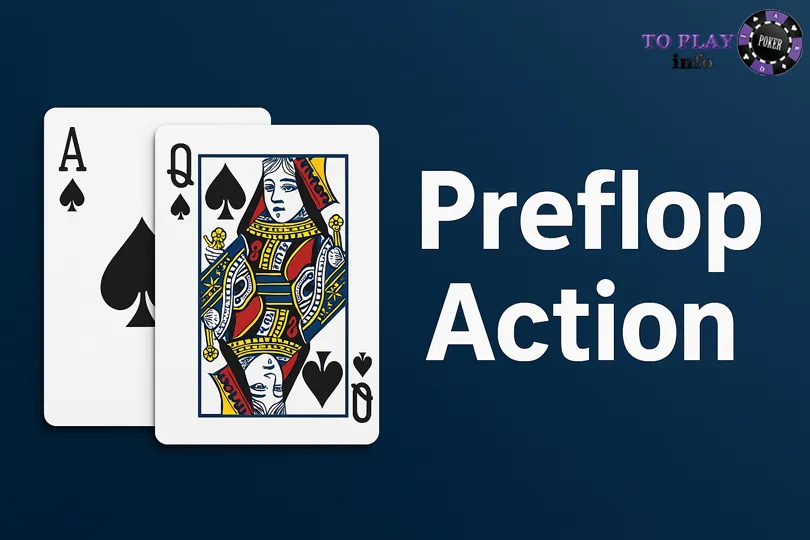
Now let’s analyze the preflop situation: In this scenario, Phil should be raising with a wide range of hands, and Ace-Queen offsuit is certainly strong enough. Although there are still four players left to act, they are all in unfavorable positions against Phil, and there is already a significant amount of money in the pot. Therefore, it is most profitable for Phil to raise with around the top 40% of hands.
Eric’s call is justified since he is getting a good price and only needs to realize about 30% equity to make it a profitable decision. His suited Jack-Five has approximately 40% equity against a range of hands that Phil might raise with. This makes it a positive expected value call.
Both players have played their hands well up to this point.
Flop Action
Moving on to the flop: The flop reveals the , with the pot size at $12,600. Eric checks, and Phil checks as well.
Flop Analysis – Phil Ivey Poker Insights
Analyzing the flop, it is appropriate for Eric to check his entire range to the player who raised preflop, which he does in this case.
Phil has a stronger range of hands on this board, including strong top pairs and overpairs. Additionally, Phil’s missed hands are also stronger than Eric’s. Phil could have hands like Ace-King, Ace-Queen, Ace-Ten suited, and King-Queen suited, all of which Eric should have re-raised with before the flop.
Given these factors, Phil should make an aggressive continuation bet with a small size on this type of board. This strategy is even more effective since they have deep stacks. A small bet by Phil encourages Eric to check-raise with his strong hands, which limits the range of hands Eric can have if he calls.
With his , Phil should make a small bet of around $4,000-$5,000. This hand has two overcards, a backdoor nut flush draw, and a backdoor straight draw, making it a strong semi-bluff with good playability.
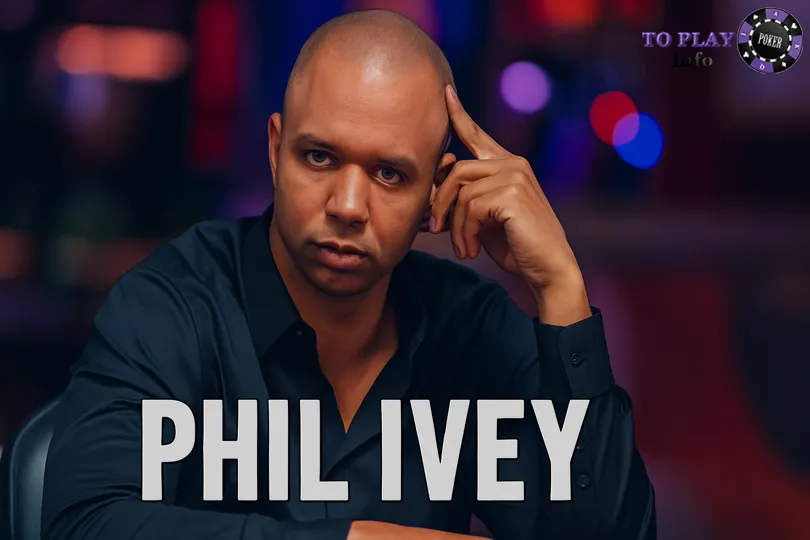
Turn Action
The turn card is , making the board , and the pot remains at $12,600.
Eric makes a probe bet of $7,600, and Phil calls.
Turn Analysis from Phil Ivey Online Poker Style
It turns out to be one of the best possible outcomes for Eric. The hands that Phil checked on the flop, mostly Ace-high and King-high hands, do not improve significantly on this turn.
A 75% pot-sized bet suits Eric’s range well. He can make value bets with all his top pairs and better hands. To balance his value range, he can bluff with flush draws, open-ended straight draws, and gutshot straight draws, including certain hands with an overcard and a flush draw blocker, such as , , , , etc.
Against this bet, Phil should sometimes call with his because it beats a large part of Eric’s range. Additionally, Phil has some equity against a significant portion of Eric’s value range due to holding two overcards to the top pair.
Both players have played the turn well.
River Action
The river card is , completing the board as , and the pot grows to $27,800.
Eric makes an overbet of $29,600, and Phil responds with a bluff-raise to $110,000. Eric quickly calls and wins the $248,000 pot.
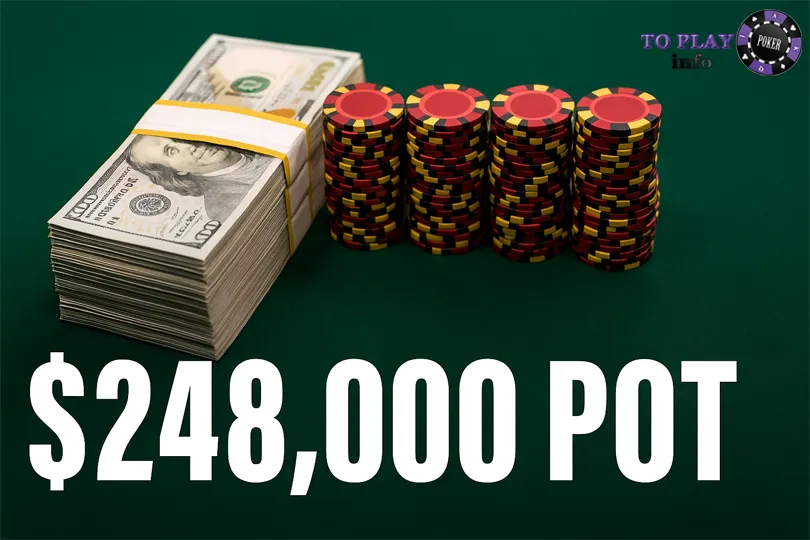
Analyzing the River – How Phil Ivey Played It
Eric Persson’s River Strategy
is an above-average card for Eric. Many of his hands now have enough equity to extract value, such as hands with a Jack. However, these hands cannot bet a large amount. Therefore, Eric should implement a strategy of making small bets that include both thin value hands and stronger ones like two pairs, sets, straights, and flushes (which protect the thin value bets). This range should be balanced by an appropriate number of bluffs to achieve equilibrium.
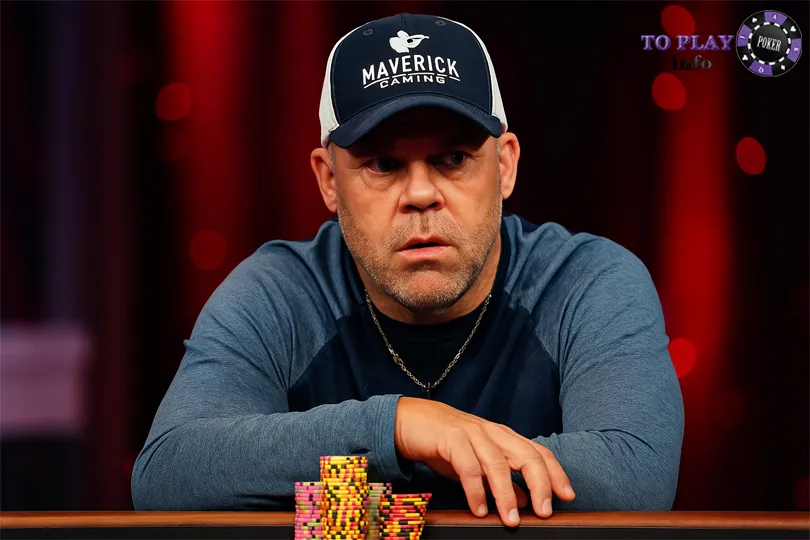
In this case, Eric opts for a small overbet with his flush, which is reasonable. It’s not an overplay, but it does leave some gaps in his overall strategy.
Phil Ivey’s Bluff Raise – A Misstep?
On the other hand, Phil’s decision to bluff-raise is fundamentally incorrect. The blockers in his hand don’t align well with the range he is targeting. Ideally, he should attempt this move with a heart in his hand.
This was a textbook example of a semi bluff gone wrong — and a reminder that even the best players can misapply this powerful tactic under pressure.
Reading the Opponent – Phil Ivey Poker Mindset
However, it’s clear that Phil was trying to exploit the situation, anticipating that Eric’s range of hands would fold too frequently to his raise. Considering that Phil is arguably the greatest player of all time, it’s reasonable to assume that he had a valid reason for thinking this way.
Final Thoughts: Who Played It Better?
Eric has to call against the bluff-raise since he holds a very strong hand, and it would be too costly to fold. Moreover, his hand blocks many of Phil’s potential value hands.
In conclusion, surprisingly, Eric Persson arguably played this hand better than the legendary Phil Ivey.
Does this mean Eric is a superior poker player to Phil? Let me ask you a question: If a player dunked on Michael Jordan once, does that automatically make them a better player?
The answer, of course, is no. The same principle applies to poker. What truly matters is that the overall decision-making process and body of work are superior to those of your opponents.
That wraps up this article! I hope you enjoyed reading it and gained some valuable insights. If you have any questions or feedback, please feel free to leave a comment below.
To better understand plays like these, check out our full guide on drawing hands in poker – especially how they can influence bluffing ranges and turn aggression into equity.
If you’re new to online poker, read our beginner’s guide to playing poker online.
Phil Ivey is considered one of the greatest poker players of all time. Learn more about Phil Ivey on Wikipedia.
For a lighter take on the poker world, don’t miss our look at the most iconic female players and personalities.
Until next time, good luck and keep grinding!
FAQ: About Phil Ivey and the Hand
Phil Ivey is a legendary poker player, often called the “Tiger Woods of Poker”. He has won 10 WSOP bracelets and is considered one of the best in history.
Phil Ivey attempted a big river bluff against Eric Persson, who held a flush and made the correct call, winning a $248,000 pot.
You can watch Phil Ivey on Hustler Casino Live, PokerGO, and various YouTube highlight channels.

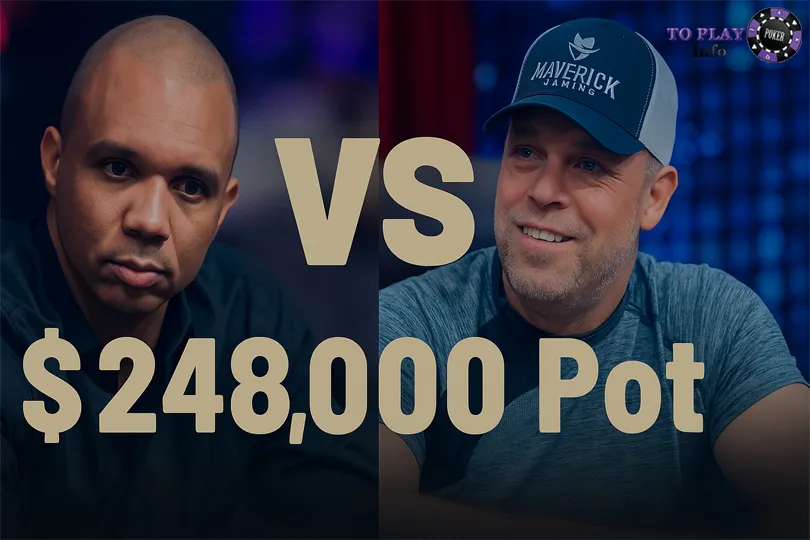
Facebook Comments